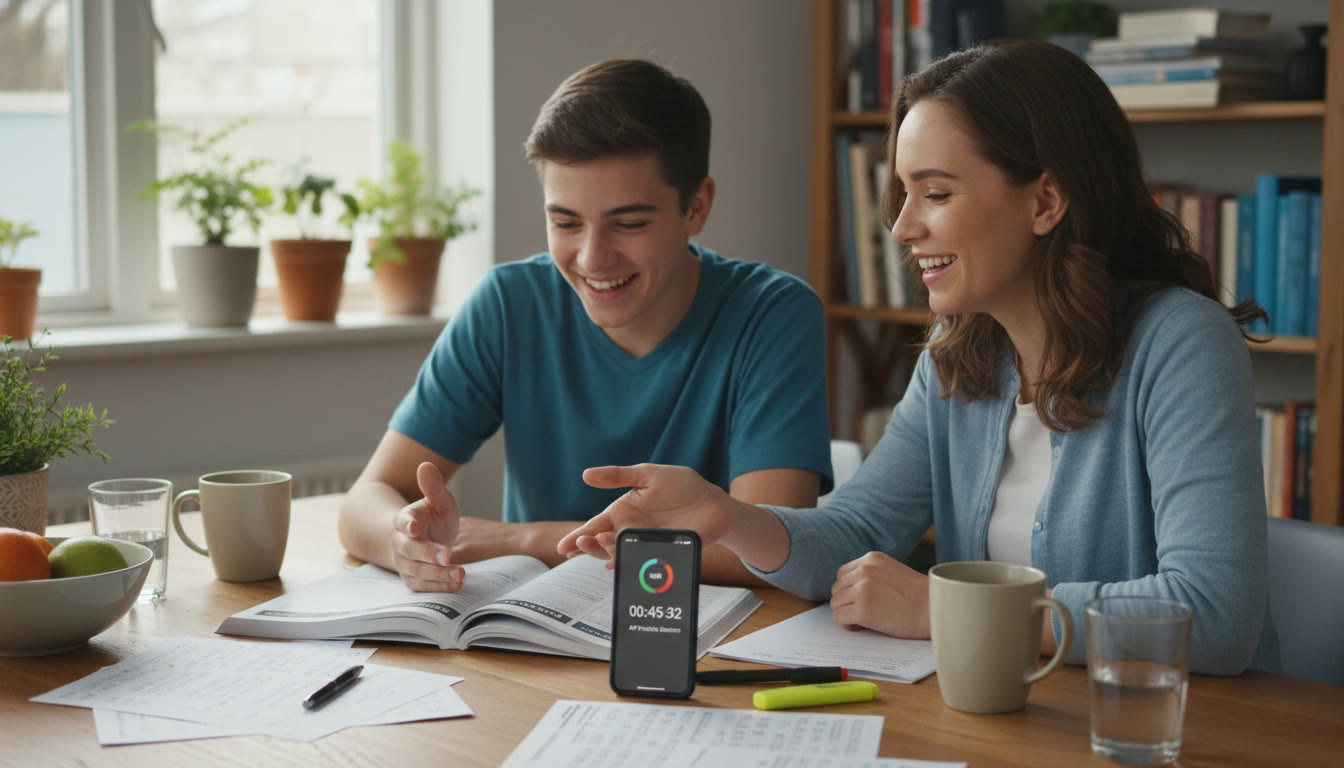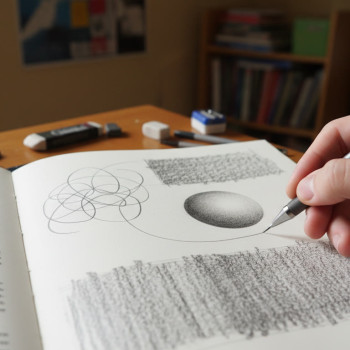Intro: Why the Little Details Matter
When a teenager says, “I have an AP exam next week,” parents often hear one word: pressure. But beneath that pressure are lots of manageable details—where your teen will sit, how the time is divided, what happens during breaks—that, when understood ahead of time, remove friction and lower stress. This post walks you through what your child should expect on AP exam day around seating arrangements, timing, and breaks. The goal is simple: help your teen arrive calm, focused, and ready to show what they know.

First things first: The atmosphere of AP exam day
AP exam rooms are structured to be quiet, predictable, and fair. Administrators follow detailed rules to protect test security and to ensure every student gets the same opportunity to perform. For your teen, predictability is the best antidote to anxiety. Knowing the room will be supervised, that seating will be measured, and that proctors will post clear start and stop times can be surprisingly reassuring.
What proctors do and why it matters
Proctors play several roles: they’re guardians of the rules, timekeepers, and the adults your child can turn to if something goes wrong. Their job includes reading instructions, distributing materials, making sure ID information is filled in correctly, and noting the start and stop times for each section. For students, listening to the proctor at the beginning of the session reduces confusion later—encourage your teen to pay close attention and ask questions before the clock starts.
Seating: spacing, charts, and why it’s not personal
Seating isn’t about comfort or favoritism—it’s about fairness and security. Schools follow a seating policy that sets a minimum distance between students, and coordinators typically create a seating chart to document who sat where. If your teen worries about being placed near a friend or feeling isolated, explain that seating is standardized and often based on room layout, subject, and sometimes whether a test is being delivered digitally or on paper.
Common seating setups you might see
- Rows with desks evenly spaced (the most familiar setup).
- Students seated behind one another with adequate spacing measured from center to center.
- For some digital exams or language speaking portions, students might be seated facing out toward a wall to limit distractions and preserve privacy during recorded responses.
Remind your child that the spacing is for everyone’s benefit: it reduces the temptation or possibility of accidental glances and keeps the focus on their own work.
Timing: the clock is part of the test
AP exams are carefully timed, often with multiple sections. Timing affects strategy—how long to spend on multiple-choice, when to move on from a tough question, or how to pace essays. Students should know both the total time and the structure of each section. Proctors post start and stop times and will read or display instructions, so encourage your teen to note those times at the beginning.
How timed sections typically work
While individual AP exams differ by subject, there are typical patterns:
- Section I: often multiple-choice or discrete-response tasks with a fixed duration.
- Section II: usually free-response questions such as essays, problem solving, or short written answers, with its own time block.
- Some digital exams bring these sections into a two-part digital structure with a scheduled break in between.
Pacing strategies teens can use
- Do a quick scan: spend the first five minutes scanning Section I to identify easy wins.
- Time checkpoints: after the first third of the time, check progress—are you on pace? Adjust if needed.
- Don’t get stuck: use a placeholder for a difficult item to return to later.
- For essays, outline briefly (2–3 minutes) before writing to avoid off-topic or disorganized responses.
Breaks: scheduled pauses vs. unscheduled breaks
Breaks can look different depending on whether the exam is paper-based, hybrid, or fully digital. Many AP tests include a scheduled break between Section I and Section II. It’s normal for students to wonder: Can I check my phone? Grab a snack? Talk to friends? The short answer: rules are strict for a reason.
What’s allowed (and not allowed) during breaks
- No consulting books, notes, or other students about the exam content.
- No electronic devices during the break—phones and smartwatches should be turned in or stored as required by the proctor.
- Students may not leave the building during the exam administration (even during breaks) unless specifically allowed by the proctor for supervised exits.
- Food and drink rules vary—usually not allowed in the testing room unless you or your child has an approved accommodation.
These rules protect test security. Make sure your teen understands them so they don’t accidentally violate a policy that could jeopardize their score.
Accommodations: extra time and breaks when needed
For students with documented needs, formal accommodations are available. These can include extended time, extra or extended breaks, or the ability to pause as needed. Families work with the school’s SSD coordinator to request accommodations through the College Board’s Services for Students with Disabilities. If you think your child might benefit, start the process early—documentation and approvals take time.
Types of common testing accommodations
- Extended time for specific sections or the whole exam.
- Extra or longer breaks applied automatically or on request.
- Use of assistive technology (screen readers, text-to-speech) or alternate formats (large print, braille).
- Human readers or scribes where appropriate.
If your child already receives accommodations at school, check with the SSD coordinator well before exam season to confirm they carry over to AP testing.
Practical examples: What a test day timeline might look like
It helps to visualize a real timeline. Below is a sample schedule for a two-section AP exam with a scheduled break. Times are illustrative; the proctor will post exact start and stop times at your teen’s school.
| Event | Example Time | What Happens |
|---|---|---|
| Students arrive and check-in | 8:00–8:15 AM | IDs checked, materials collected, seating chart recorded |
| Instructions and distribution of materials | 8:15–8:25 AM | Proctor reads general instructions; students fill ID info |
| Section I begins | 8:30 AM | Timer starts when student begins (digital) or when proctor says “start” (paper) |
| Scheduled break | 10:00–10:15 AM | Students may stand, stretch, but must follow break rules |
| Section II begins | 10:15 AM | Proctor restarts or students resume testing on their devices |
| Exam ends and dismissal | 12:00 PM | Materials collected; proctor checks submission status |
What if your teen’s timing is staggered?
For digital exams, students might begin Section I at slightly different times because they enter a start code individually. That means some students will take breaks earlier or later than others. Schools may choose to have students leave only when everyone has finished Section I, or to allow staggered breaks; either is acceptable as long as rules are followed.
Common worries—and how to address them
Parents often field questions that sound small but feel huge to teens. Below are typical worries with practical, parent-friendly responses you can use.
“What if I finish early?”
Finishing early can feel great and also unsettling. Teach your teen to use early time to review: check answers, ensure all boxes are filled in, and polish essays if time remains. If it’s a digital exam and they submit early, they should remain seated and quiet until the proctor gives dismissal instructions.
“What if I need the bathroom?”
Unscheduled restroom breaks are allowed but they subtract from testing time. If your teen has a medical condition that requires frequent breaks, arrange for accommodations in advance. Otherwise, encourage them to use the restroom before check-in to minimize disruptions.
“What if my phone goes off?”
Phones must be turned off and kept away during testing. If a phone is used during the exam or break, it can lead to serious penalties, including score cancellation. Before leaving home, check pockets and backpacks together so your teen isn’t tempted to sneak a glance during a break.
Practical parent checklist for the week before the exam
- Confirm exam date, report time, and exact location with your teen’s school.
- Review the school’s check-in procedure and ID requirements.
- Pack a small quiet bag for break time: water (if allowed), a light snack for after the exam, tissues, and any approved materials for accommodations.
- Practice timing at home with at least one full-length practice section so your teen knows pacing strategies.
- Discuss the rules around breaks and devices so there are no surprises on test day.
How tutoring and tailored prep can ease test-day logistics
Content knowledge matters, but familiarity with test mechanics—how seating looks, how timing flows, how breaks are managed—reduces cognitive load on test day. Personalized tutoring can simulate the testing environment, teach pacing strategies, and build the small routines that add up to calm performance. For example, Sparkl’s personalized tutoring often includes 1-on-1 guidance, tailored study plans, and AI-driven insights that help identify timing weaknesses and craft practice schedules that mimic the real exam clock. These targeted practices make the actual exam day feel less like a surprise and more like a well-rehearsed performance.
Real-world examples: two teen stories
Stories make abstract rules feel real. Here are two condensed vignettes that show how small preparations can change the day.
Case 1: Emma—learned pacing by doing
Emma was naturally fast at multiple-choice questions but slow on essays. Her tutor helped her practice a timed essay outline routine: 3 minutes to plan, 25 to write, 5 to revise. On test day she used that template and finished with 4 minutes to spare to proofread. The result: clearer structure, fewer careless errors, and much less second-guessing when the clock ticked down.
Case 2: Marcus—accommodations put in place early
Marcus needs short breaks for a medical condition. His parents worked with the school’s SSD coordinator early in the year to request extra break time and a private, monitored break area. On exam day he was calm because the arrangements were in place and the proctor knew exactly what to do when he needed to pause.
On the morning of the exam: rituals that actually help
Rituals anchor nerves. A consistent, light pre-exam routine can make a big difference.
- Sleep: prioritize a good night’s sleep the two nights before, not just the night before.
- Breakfast: a balanced meal with protein and whole grains supports steady focus.
- Arrive early: aim to arrive 20–30 minutes before check-in to allow for parking and last-minute instructions.
- Positive reminders: say something short and specific like, “You’ve practiced this pacing—trust it.”
After the exam: debrief without drama
Once the exam ends, the emotional reaction can be intense—relief, doubt, elation, or disappointment. Resist the urge for a long debrief immediately. Give your teen a quiet ride home or a light activity to decompress. If they want to talk, listen with empathy and avoid turning the moment into an analysis of every answer. In the days following, if they’re preparing for another AP test, use the experience to refine pacing and break strategies for the next administration.

Final thoughts: Calm confidence beats last-minute cram
Understanding seating, timing, and break rules takes away the unknowns that often amplify test anxiety. Encourage your teen to practice with real timing, to review test-day rules, and to communicate any accommodation needs well in advance. Tools like simulated timed sections, private tutoring sessions, and structured checklists transform abstract worry into concrete preparation.
And if your teen could benefit from one-on-one guidance or a tailored study plan that includes timing drills and realistic full-length practices, consider personalized tutoring options like Sparkl’s. Small, consistent interventions—an hour a week of focused practice, a pacing plan, and a proctor-style walk-through—can change the test day experience from fraught to manageable.
Quick reference: Parent’s test-day checklist
- Confirm exam date/time/location with the school.
- Verify ID and check-in instructions.
- Check accommodation approvals (if applicable).
- Pack quiet break items (if allowed) and pre-approved accommodations.
- Practice at-home timing and one full-length simulated section.
- Arrive early and keep the ride home calm and low-key.
Closing encouragement
Your teen doesn’t need perfection—just a steady, calm approach and a few practical skills. When parents help remove uncertainty about seating, timing, and breaks, they give teens permission to focus on what matters most: demonstrating the knowledge and skills they’ve built all year. That calm preparation is the best exam strategy you can gift your child.




















No Comments
Leave a comment Cancel